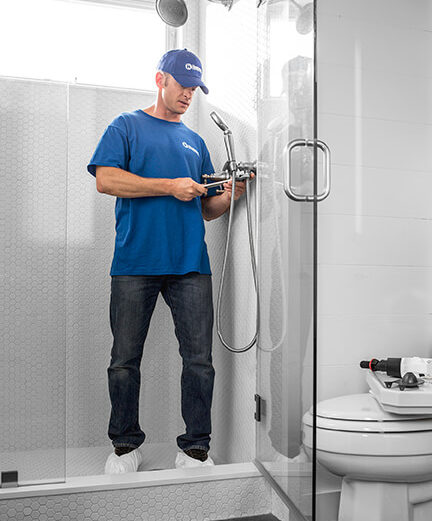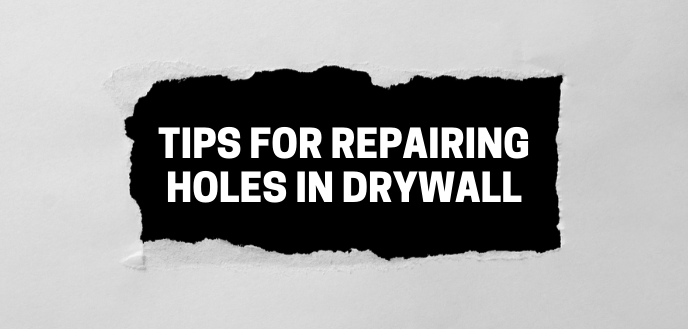We offer a wide range of services for that fresh look, or just maintenance or updates to keep your home functioning and safe. Regardless of the size of the job, we have a craftsman that can tackle it. We offer a wide range of services for that fresh look, or just maintenance or updates to keep your home functioning and safe. Regardless of the size of the job, we have a craftsman that can tackle it.

Home Maintenance>Drywall Repair / March 3, 2020

Maybe your little one was practicing bat swings indoors. Or maybe your attempt at hanging a 50-pound mirror went terribly, terribly awry.
Regardless of how it got there, if you’re staring at a black hole where drywall should be, you’re probably wondering where to begin in fixing it.
Here at Handyman Connection of Austin-Westlake, we’re no stranger to drywall holes and sheetrock repairs big and small, from simple nail pops to indoor baseball mishaps.
But if you’re determined to patch this hole the DIY way, here are a few tips to keep in mind:
Tiny nail holes are easy to fix – simple apply a little spackle to the hole, sand it down so it’s flush with the wall and paint over.
But nail pops are different. If you’ve noticed little round holes popping out on your walls, these are known as nail pops. They can occur over the years as a house settles and the beams behind the drywall push the nails outward.
Fixing nail pops requires two drywall screws – one above and one below the nail pop – and spackle. Once your screws are in, cut out the damaged, popped drywall around the nail in the middle. Then, spackle over both screws and the damaged part of the wall.
Note: Be careful not to drive the screws in too deep – if you do, you’ll have to insert another screw near the first to fix it properly.
For holes larger than a quarter, you’ll need to use sticky fiberglass mesh or a galvanized metal patch over the hole before applying a spackling compound. This will give your patch the structure it needs to hold up during painting without crumbling.
Once you’ve done this, spackle over the patch, sand it down and paint as needed.

If the hole is larger than 5 inches in diameter, you’ll need to cut out the damage and screw in a few pieces of scrap lumber to support your replacement patch.
Once you’ve done that, secure a section of drywall that fits within your cutout, cover the seams with self-adhesive mesh and apply drywall joint compound. Then, sand down the join compound and repaint as needed.
Repairing drywall may seem like an easy DIY project, and sometimes – especially for tiny nail holes – it can be! But if you’re dealing with a repair that’s a little beyond your reach, call a drywall repair professional for help.
An incorrectly repaired hole or improperly installed patch can end up crumbling on its own or damaging the surrounding drywall, making the damage even worse.
From Round Top to Mason, and everywhere in between, we offer expert drywall and sheetrock repair services in Austin and the surrounding areas. If you need help with your repair project, give us a call at (512) 975-3040 or request an estimate in just a few clicks.